Dusty –
Filter damage monitoring
Dusty is a filter monitor that works on a triboelectric basis
- Detects all dust types
- Electronic alarm output
- Usable in clean gas and dust channels
- Very simple and fast retrofitting
- Immediate detection of filter damages
- Uncomplicated commissioning (Plug & Play)
- Excellent price / performance ratio
- Easily expandable to 4 … 20 mA output (trend signal)
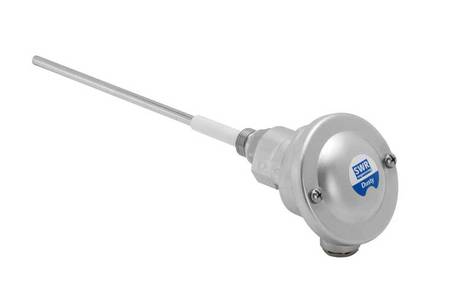
What do you want to do?
Use
The Dusty was specially developed to reliably monitor clean sides after filters for filter breaks without delay.
The Dusty can be used in metal channels in which dust particles are to be detected in flowing gas. Its operational range starts at dust volumes of 0.1 mg/m3. In systems with explosion hazard area zone 22, the “Dusty DustEx 22” type can be used. Due to its speed and reliability, the Dusty can also be used optimally as an alternative and/or expansion to the “police filter” as well as an alternative to the differential pressure measurement. The Dusty uses the triboelectric effect. As soon as particles either flow past or impact the measuring probe, a charge transfer takes place. This generates a measuring signal that triggers a switch contact once the normal values described under “System” are exceeded.
Function
The “Dusty” uses the tried and tested triboelectric principle. This means that as soon as moving, electrically charged dust particles impact the sensor or fly past it, an electric charge transfer of the particles to the sensor rodtakes place. These very small signals are reinforced in the electronics and thus made visible. The Dusty is a compact device that operates on 24 V DC supply voltage. The device is delivered pre-calibrated. The switching point is set to approx. 25 mg/m3_ dust (reference material) and can be individually adjusted to the respective application by the operator. * The switching points can be corrected up or down manually by the user in 5 mg increments, depending on the requirements for the application. If the user experiences difficulties with the pre-calibration, it is possible to carry out an auto-setup. During the auto-setup, the actual dust volume in the clean gas is determined and can be saved as a reference value (normal). In principle, the “Dusty” can detect all types of dust. Any coating on the sensor rod has no influence on the function of the device. The solid stainless steel sensor rod has a standard length of 200 m and in case of small channel diameters can be reduced to the required length as desired.
If desired, the Dusty can be combined with a converter. This converter converts the measuring signal into a continuous 4… 20 mA signal and outputs this. Thistrend signal makes it possible for the user to represent the dust load on the clean gas side. In case of a large channel diameter, up to 3 sensors can be connected to one converter to improve the trend signal. * (The pre-calibration takes place at SWR’s own test facility with organic dust under the following conditions: Channel diameter = 250 mm; air flow speed 14 m/s; temperature 25 °C)
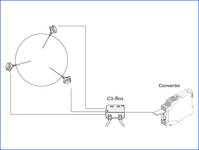
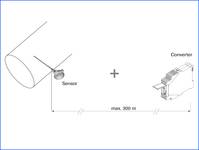
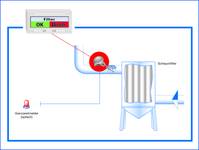
Mounting and Installation
Determination of the installation location:The best installation height for the sensor in a channel or a pipeline is located in an area in which the particles are subject to an even distribution and with constant speed. In an ideal case, the channel or pipeline will run horizontally or vertically, and installations such as curves, flaps or sliders should have a minimum distance of 5 times the pipeline diameter in every flow direction to the sensor rod . The Dusty has to be installed in a metal channel to achieve sufficient shielding against electric influences from the outside and good earthing. For non-metallic lines, a sheath made of metal, or in the form of a metal foil or a fine-mesh metal net with a length of approx. 5 times the pipe diameter around the measurement area of the line must be installed.
- The Dusty is to be installed in a position where the gas flow hits the sensor rod at an angle of 90°.
- In pipelines with a round profile, the Dusty can be installed in any position above the horizontal axis (betw. 9 and 3 o’clock).
- The installation in pipelines with a square profile, the pipelines can be installed on the top or in the side, in the middle respectively.
- Even if the sensor is not impaired in its function through vibration, strong vibrations should be avoided.
- The electronics should not be exposed to any direct sunlight or used in areas with an ambient temperature of more than 55 °C.
- The sensor rod may not come into contact with the opposite pipeline wall or any other installation! For this, the length of the sensor can be reduced to a minimum length of 100 mm.Graphic: Round profile Graphic: Square profile
Installation of the sensor:
First the G 1/2’’ internal thread bushing is welded onto the pipeline at the selected installation location. Then the Dusty is firmly screwed in using the external thread until there is a leak-proof connection to the process. Screwing in too tightly, due to possible damage to the sensor or electronics, as well as an opening of socket screw in the external thread for the turning of the head due to possible tearing off the cable from the circuit board are to be avoided.
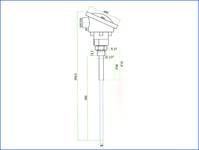
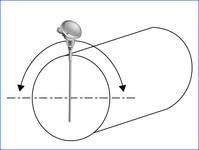
Technical Data
| Sensor | Measuring objects | Solid particles in the gas flow |
|---|---|---|
| Measurement range | from 0.1 mg/m³ | |
| Setup measuring range | pre-calibrated | |
| Process temperature | max. 140 °C (higher temperatures on request) | |
| Ambient temperature | – 20… + 60 °C | |
| Pressure | max. 2 bar | |
| Gas velocity | min. 4 m/s | |
| Humidity | 95 % RH (non-condensing) |
|
| Measuring principle | Triboelectric | |
| Damping time | 1 s | |
| Output signals | 1 alarm output, potential-free, NO/NC | |
| Sensor rod | Total length: 260 mm, length of stainless steel rod: approx. 194 mm | |
| Alarm stages | Pre-alarm: 5 x normal Main alarm: 20 x normal |
|
| Enclosure | Aluminium | |
| Protection category | IP 65; DustEx 22 (optional) | |
| Power supply | 24 V DC ± 10 % | |
| Power consumption | 1 W | |
| Electrical connection | 4 screw terminals / Terminal compartment (optional M12-plug) | |
| Cable (output + signal) | 8 wires (shielded) | |
| Assembly | via 1/2″ thread | |
| Weight | approx. 0.7 kg | |
Application Examples
Click on a desired application example to navigate to a detailed description.
Filter damage monitoring
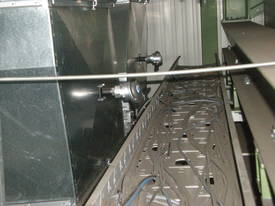
Filter damage monitoring of metal grinding dust
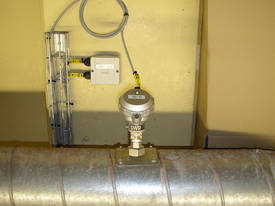
Monitoring of air quality
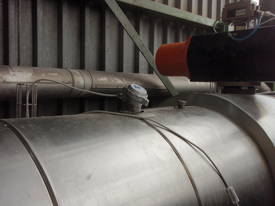
Filter damage monitoring of cement dust
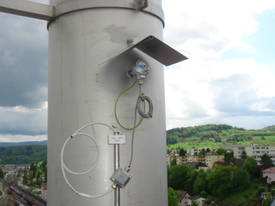
Filter damage monitoring of washing powder
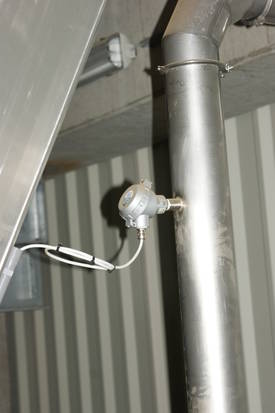
Filter damage monitoring of filter dust
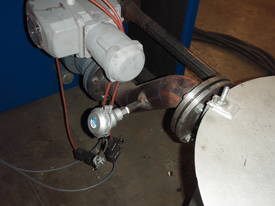
Filter damage monitoring of filter dust
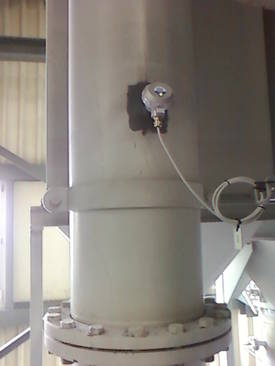
Dust monitoring in feed lines
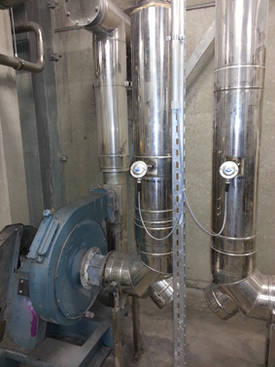
Filter damage monitoring
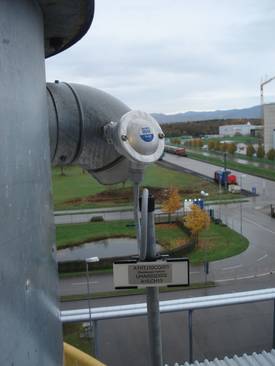
Dust filter damage monitoring
on a clear gas site
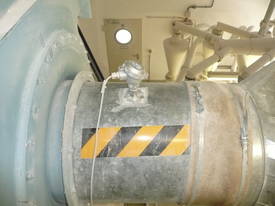
Filter damage monitoring in clean gas channel
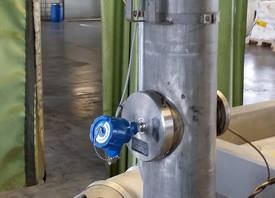
Processing of photoinitiators in chemical industry
Global Technology Systems
P.O. Box 799 Shalimar, FL 32579. USA
(850) 651-3388
[email protected]


